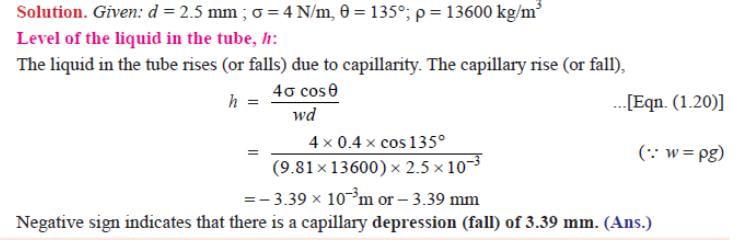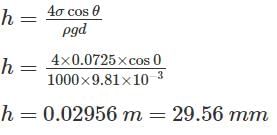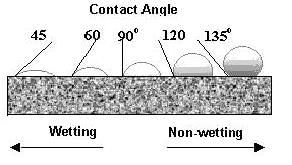Test: Properties of Fluids & Turbulent Flow in Pipes - 2 - Mechanical Engineering MCQ
15 Questions MCQ Test GATE Mechanical (ME) Mock Test Series 2025 - Test: Properties of Fluids & Turbulent Flow in Pipes - 2
Kinematic viscosity of air at 20°C is given to be 1.6 × 10-5m2/s. Itskinematic viscosity at 70°C will be vary approximately
Match List-I (Type of fluid) with List-II (Variation of shear stress) and select the correct answer:


| 1 Crore+ students have signed up on EduRev. Have you? Download the App |
In an experiment, the following shear stress - time rate of shearstrain values are obtained for a fluid:
Time rate of shear strain (1/s): 0 2 3 4
Shear stress (kPa): 0 1.4 2.6 4
Time rate of shear strain (1/s): 0 2 3 4
Shear stress (kPa): 0 1.4 2.6 4
A plate having an area of 0.6 m2 is sliding down the inclined plate at 300 to the horizontal with a velocity of 0.36 m/s. There is a cushion of fluid 1.8 mm thick between the plane and the plate. Find the viscosity of the fluid if the weight of the plate is 280 N.
A clean tube of diameter 2.5 mm is immersed in a liquid with a coefficient of surface tension = 0.4 N/m. The angle of the liquid with the glass can be assumed to be 1350 . The density of the liquid = 13600 kg/m3 . What would be the level of the liquid in the tube relative to the free surface of the liquid inside the tube.
The capillary rise at 200C in clean glass tube of 1 mm diameter containing water is approximately
In fully-developed turbulent pipe flow, assuming 1/7th power law, the ratio of time mean velocity at the centre of the pipe to that averagev elocity of the flow is:
A U-tube is made up of two capillaries of diameters 1.0 mm and 1.5 mm respectively. The U tube is kept vertically and partially filled with water of surface tension 0.0075kg/m and zero contact angles.
Calculate the difference in the level of the menisci caused by the capillarity.
A metal plate 1.25 m × 1.25 m × 6 mm thick and weighting 90 N is placed midway in the 24 mm gap between the two vertical plane surfaces. The Gap is filled with an oil of specific gravity 0.85 and dynamic viscosity 3.0N.s/m2. Determine the force required to lift the plate with a constant velocity of 0.15 m/s.
In order to form a stream of bubbles, air is introduced through a nozzle into a tank of water at 20°C. If the process requires 3.0 mm diameter bubbles to be formed, by how much the air pressure at the nozzle must exceed that of the surrounding water? What would be the absolute pressure inside the bubble if the surrounding water is at 100.3 kN/m2? (σ = 0.0735 N/m)
A 400 mm diameter shaft is rotating at 200 rpm in a bearing of length 120 mm. If the thickness of oil film is 1.5 mm and the dynamic viscosity of the oil is 0.7 Ns/m2 determine:
(i) Torque required overcoming friction in bearing;
(ii) Power utilization in overcoming viscous resistance;
Match List-I (Physical properties of fluid) with List-II (Dimensions/Definitions) and select the correct answer:
Fluids that require a gradually increasing shear stress to maintain a constant strain rate are known as
Consider the following statements:
1. Gases are considered incompressible when Mach number isless than 0.2
2. A Newtonian fluid is incompressible and non-viscous
3. An ideal fluid has negligible surface tension
Which of these statements is /are correct?
At the interface of a liquid and gas at rest, the pressure is:
|
29 docs|220 tests
|
|
29 docs|220 tests
|


















